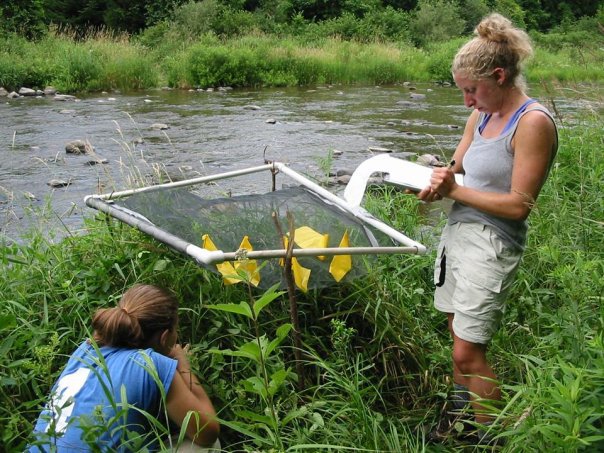Effectiveness of Riparian Corridors
May. 30th 2017The importance of riparian buffers is well known when considering stream health and flood resilience. Riparian buffers reduce erosion by providing streambank stability. However, riparian buffer presence alone may not be sufficient to stabilize streambanks during extreme precipitation events, such as Tropical Storm Irene. Bill Keeton, a researcher in the Rubenstein School of Environment and Natural Resources at the University of Vermont, along with former graduate student Erin Copeland and others, investigated the importance of forest stand structure (i.e. a forest’s “architecture”), in contrast to using just forest cover alone, to quantify the flood resilience of streams.
Extreme precipitation events are expected to increase in frequency under a warming climate. Reducing flood risks resulting from these storms is a concern for communities. Floods change the geomorphology of streams, causing channels to shift to new parts of a floodplain that may have houses or other infrastructure.
To help managers identify and prioritize riparian forest restoration, the researchers asked the question: How does stream geomorphic condition vary, not just with presence or absence of forest cover, but with differences in stand structure among reaches?
The researchers used a Rapid Geomorphic Assessment (RGA) at 32 sites to assess indicators of stream geomorphic condition, such as bank erosion, sediment deposition, channel movement entrenchment, and connectivity to floodplain. To determine the effect of stand structure on geomorphic condition, they sampled forest vegetation composition and structure in the riparian buffer zone for reach-scale analysis. They performed land cover analysis of the entire stream network to determine if stand structure was more important to geomorphic condition directly near the stream or if watershed-scale characteristics also played a role.
Stands with more complex structures, such as greater levels and spatial variation of stocking (basal area), dead trees, and lower invasive shrub densities, were associated with higher RGA scores and stand complexity. Root biomass is also related to basal area and correlated with RGA scores, specifically improving bank stability and reducing erosion. Complex riparian stands improved stream geomorphic condition at the reach scale. However, forest cover at upstream watershed scales was not relevant to stream geomorphic condition at all scales.
Although this was not explicitly questioned, late-successional forest structure characteristics may be correlated with high RGA scores and good stream geomorphic condition. This is because the characteristics of late-successional forest, such as spatial variation in structure related to canopy dynamics, play important roles in adding wood to streams. Downed wood not only provides habitat features in streams, but also plays a stabilizing role in stream channels and along banks, increasing flood resilience.
The results of this study suggest riparian buffer presence alone is not enough to promote stream channel stability and flood resilience. Understanding the importance of forest stand structure, including diversity in tree diameters and dead tree stems, provides managers with information to help them identify and prioritize areas for restoration or management. Implementing silvicultural practices to increase riparian stand structural complexity may reduce flood risks facing many communities in the Northern Forest Region, especially if extreme precipitation events increase in the future.
 ecoNEWS VT
ecoNEWS VT